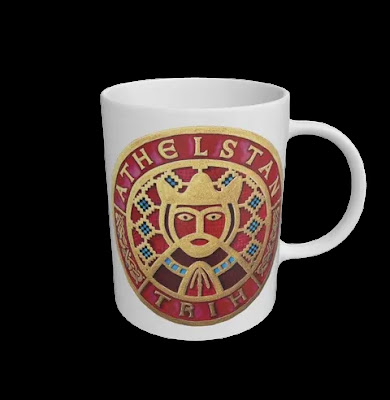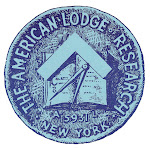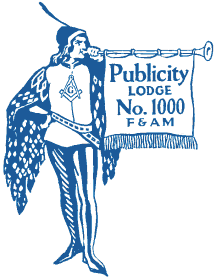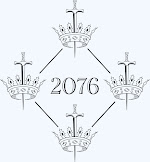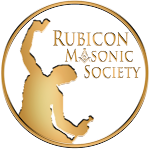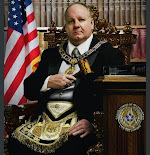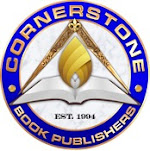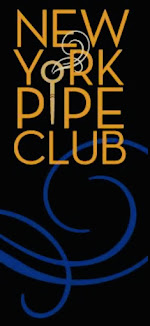The side of Jewish mysticism named Kabbalah is vexing to me and to many others, and is especially confusing in Freemasonry. Writing for Aish, Rabbi Mordechai Becher gives an introduction in this recent article. The following is copyright © 2024 aish.com.
 |
| Day 7, painting by Yoram Raanan. Click here. |
What is Kabbalah
and what are its origins?
What did Sir Isaac Newton, the great 18th century scholar the Vilna Gaon, and the Lubavitcher Rebbe have in common? All of these remarkable figures studied Kabbalah, the ancient Jewish mystical tradition. The Oxford Dictionary1 defines mysticism as “spiritually allegorical; occult, esoteric; of hidden meaning, mysterious and awe-inspiring” — apt descriptions of Kabbalah. Yet to understand Kabbalah fully, it helps to consider how Judaism itself views this profound tradition.
Kabbalah is not red wrist bands, misspelled Hebrew tattoos, sweat lodges or celebrity endorsements. Kabbalah, which means “received,” signifies a wisdom passed down through generations, tracing back to Moses at Mount Sinai.2
It is also known as sod, meaning “secret,” or sitrei Torah, “the secrets of the Torah.” These mysteries delve into realities beyond the physical and linguistic realm, a domain that cannot be entirely articulated. Hence, Kabbalah remains a “secret” or “code,” even as it is shared and studied.
Kabbalah offers a vision of total reality—one that is primarily spiritual—contrasting with science, which seeks to explain the physical, observable world. A core teaching in Kabbalah is that what we perceive with our senses represents only a partial truth. True reality, in Kabbalistic thought, is Divine reality, present here and now but often unnoticed. Kabbalah strives to help practitioners connect to this higher reality, enriching and aligning our lives with a more comprehensive truth. Such knowledge cannot rely solely on sensory experience or logic; it requires revealed wisdom.
Given its complexity and depth, Kabbalah is traditionally studied by mature individuals with strong moral character and foundational Torah knowledge. Its study involves understanding the spiritual fabric of existence, the nature of God’s relationship with the world, and our place within this relationship. Errors in understanding Kabbalistic teachings can have serious spiritual consequences, underscoring the importance of preparedness and ethical maturity in its study.3
Kabbalah is part of the Jewish Oral Tradition, believed to have been conveyed by God to Moses on Mount Sinai and during the subsequent journey through the Sinai desert. References to its wisdom appear throughout Jewish history under various terms, and over time, different aspects have been progressively revealed.
One of the earliest Kabbalistic texts is Sefer Yetzirah (“The Book of Formation”), traditionally attributed to the patriarch Abraham or great Talmudic sage Rabbi Akiva. Another significant work is Sefer HaBahir (“The Book of Illumination”), attributed to Rabbi Nechunya ben HaKanah of the first century CE.
 |
| Sefer Yetzirah Wheel with Tree of Life and Hebrew letters. |
The most influential text of Kabbalah is the Zohar (“Book of Splendor”), written by Rabbi Shimon bar Yochai and his students and composed around 200 CE. Written in Aramaic, the Zohar spans thousands of pages, largely formatted as a mystical commentary on the Torah and other biblical books, including sections like the Tikkunei Zohar, which offers 70(!) interpretations of the Torah’s first word, “Bereshit” (“In the beginning”).
Among the great Kabbalistic sages were Rabbi Moses Cordovero, Rabbi Isaac Luria (the “Ari”), and Rabbi Chaim Vital, all of whom lived in Safed in the 16th century. Later figures included Rabbi Moshe Chaim Luzzatto (Italy, 18th century), the Gaon of Vilna (Lithuania, 18th century), and Rabbi Shneur Zalman of Liadi (founder of the Chabad Chassidic movement, Lithuania, 18th century).
Areas of Study
Kabbalah encompasses five primary areas of study, which sometimes overlap:
1. Ma’asei Bereshit4 – “The Deeds of Creation”: This explores how an infinite God created a finite world, and the paradox of God permeating time and space while allowing the material world to exist.
2. Ma’asei Merkava5 – “The Deeds of the Chariot”: Just as a chariot enables its driver to affect a battlefield while remaining separate from it, this area examines God’s providential interaction with the world while remaining unaltered by it.
3. Ta’amei Hamitzvot6 – “Reasons for the Commandments”: Here, Kabbalists explore the spiritual purpose of the commandments, how they link body and soul, and the way they harmonize the physical and spiritual realms, affecting all levels of existence.
4. Remez (Hints) – Kabbalistic interpretations of verses, stories, and symbols in the Torah offer deeper meanings, often through methods beyond literal interpretation.
5. Beyond these categories, Kabbalah also includes practical guidance for meditation,7 prayer,8 and contemplation of the many Names of God found in Jewish texts. Kabbalists provide mystical insights for observing the commandments, enabling practitioners to engage with their spiritual dimensions fully.9
The Ten Sephirot
One of the foundational concepts in Kabbalah is the notion of the Sephirot. The Ten Sephirot represent God’s revealed creative energies through which all existence is sustained and through which the universe operates. These ten attributes are not God Himself but rather expressions of His creative power within a finite reality. As divine energy manifests in the world, it does so in these ten distinct modalities, or Sephirot.10
A vivid example of this can be seen in the relationship between two specific Sephirot: Chesed (loving-kindness) and Gevurah (judgment). Chesed is characterized by expansiveness and generosity, while Gevurah embodies restraint, discernment, and limitation. These qualities are akin to green and red traffic lights—if all lights were green, there would be chaos; if all were red, movement would cease.11
 |
| aish.com |
The Ten Sephirot: The harmonious blend of these two forces gives rise to the Sephira of Tiferet, which represents balance, beauty, and splendor. While God may sometimes act with pure kindness or strict judgment, He generally directs the world with a balanced measure of the two, known as Tiferet or Rachamim (compassion).
Kabbalists also delve into the layered nature of the human soul,12 the stages of creation,13 and the various names of God in the Torah, referring to Him primarily as Ein Sof, or “the Infinite.”
The Zohar, a central Kabbalistic text, connects the Sephirot to prominent figures in the Torah: Abraham embodies Chesed, Isaac represents Gevurah, and Jacob stands for Tiferet. Since humanity is intended to serve as a bridge to the Divine, even the human body reflects this Sephirotic structure. Jewish practice often favors the right hand in fulfilling commandments, symbolizing the Sephira of Chesed and emphasizing kindness as an attribute to prioritize over Gevurah, represented by the left.
Rabbi Isaac Luria, the Ari
One of the most influential figures in Kabbalistic history was Rabbi Isaac Luria, known as the Ari, an acronym that also means “Lion.” Growing up in Cairo, he later moved to Safed in northern Israel in the 16th century, where, despite his short life—he died at only 38—he transformed the study of Kabbalah. His revolutionary teachings introduced concepts and structures that would shape Jewish mysticism profoundly. His student, Rabbi Chaim Vital, recorded many of the Ari’s teachings in a multi-volume work, helping to preserve and disseminate them. Other figures who furthered his ideas include Rabbi Yisrael Sarug, Rabbi Moshe Chaim Luzzatto (Italy), Rabbi Shalom Sharabi (Yemen and Jerusalem), and the Gaon of Vilna (Lithuania).
Authentic Kabbalah offers a lens through which each moment, object, and action is infused with meaning and purpose. It brings sanctity to the ordinary and guides us toward the ultimate goal of unity: unity in thought, speech, and deed; unity between individuals; and unity between all of creation and God.
Featured Image above: Painting by Yoram Raanan, Day 7. Click here to visit the artist’s website.
1. The Concise Oxford Dictionary, Fifth Edition, 1972
2. Nachmanides, Commentary on Genesis 1:1
3. Introduction to Pachad Yitzchak, Rabbi Yitzchak Hutner
4. Mishnah Chagiga 2:1
5. Ibid.
6. The Ra’aya Meheimnah section of the Zohar. Taamei Hamitzvot, Rav Menachem Recanati
7. See, for example, Jewish Meditation: A Practical Guide by Aryeh Kaplan
8. E.g. Inner Worlds of Jewish Prayer by DovBer Pinson
9. E.g. Sefiros—Spiritual Refinement Through Counting the Omer by Yaacov Haber and David Sedley
10. Rabbi Moshe Cordovero, Pardes Rimonim
11. Analogy heard from my dear friend, Rabbi David Solomon.
12. Nefesh, Ruach, Neshama, Chaya, Yechida
13. Atzilut, Briah, Yetzirah, Asiyah - ABIY”A

